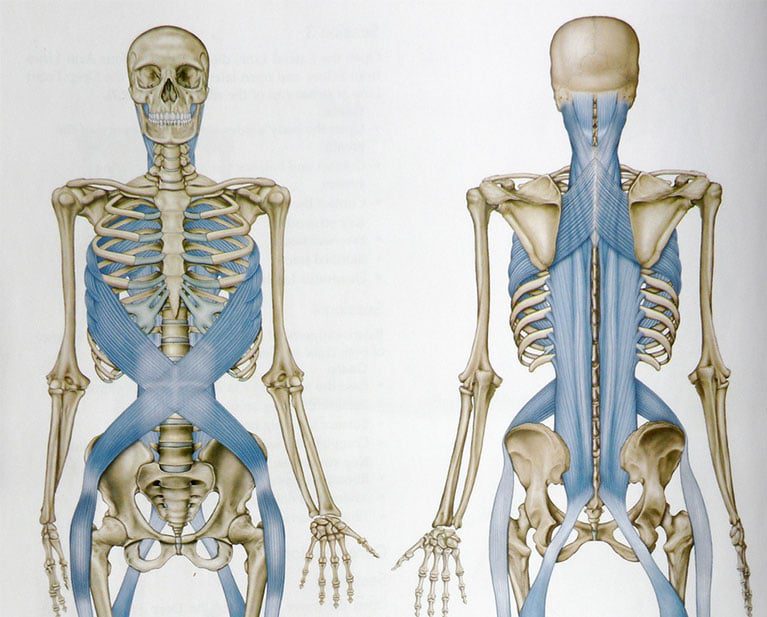'Fascia' and "myofascial release" have become hot-button topics in the fitness and healthcare world in recent years, inspiring a multitude of products, from foam rollers to using tennis or lacrosse balls in ways that do not involve nets. Although widely referenced, fascia is misunderstood by many.
You might be wondering though, "What is fascia, and what do these techniques actually do?"
What is Fascia?
Fascia was once considered a simple network of tissue that holds our organs in place. Now, it is recognized as having a large role in not only maintaining static posture but also in dynamic movement quality and efficiency, along with energy transfer throughout the body.
The first layer of fascia is relatively superficial. The quality of tissue in this layer is wispier and has less organization compared to the deeper myofascial (or muscle + fascia) networks. This superficial layer of fascia functions as a connection between the subcutaneous tissue and the deeper networks.
For a variety of reasons, the fibers of this fascial layer can become 'stuck' to other fascia fibers, or to underlying tissue, thus forming adhesions. If these adhesions are not broken up, they can increase in size and depth, requiring dysfunctional compensation to make up for the movement that is lost.
In contrast, the deeper fascia is more organized, with the fibers aligning with the direction of stressors applied. In fact, as you change or modify your movement direction, the fibers become tense or more rigid in some directions and less rigid with more slack in other directions.
This contributes to the notion of including multi-directional movements to your training or workouts. If you only move in one plane, not only do the other muscles atrophy and weaken, but the fascial complex loses its ability to maintain efficiency.
Compared to muscle tissue, the fibers of fascia are 'stiff' or plastic. While elastic fibers regain their original form following a stretch, plastic fibers will not return to the original state, and depending on the stiffness compared to the stretching force applied, may fail or rupture. This tissue stiffness allows energy to be transmitted along the fascial chains, and because there is some elasticity, the underlying structures are able to contract and expand cross-sectionally as well as longitudinally.
Major Chains of Fascia
There are six major chains of fascia: superficial posterior, superficial anterior, deep anterior, lateral, spiral, and upper extremity.
- The superficial posterior line incorporates muscles from the top of the head, down the back of the neck, back, hips, and legs, and terminates at the ends of the toes.
- The anterior superficial line begins at the bottom of the chin, encompasses superficial muscles along the front of the neck, and runs along the middle portion of the pectoralis muscle, superficial abdominals, thighs, legs, and terminates at the top ends of each toe.
- The deep anterior line incorporates the deeper anterior neck muscles, runs below the pectoral muscles, and includes the deeper abdominals and inner thigh muscles.
- The fourth line, the lateral line begins at the base of the skull, then splits to surround the shoulder joint, and continue down the sides of the body, iliotibial band, outer lower leg, and outer foot.
- The spiral line also begins at the base of the skull, and follows the upper trapezius in an inferior-lateral pattern, continues around the superior external obliques of one side to the inferior internal obliques of the opposite side, down the iliotibial band and glute, then from the lateral knee continues inferior-medially around the lower leg.
- Finally, the upper extremity chain encompasses the posterior-lateral neck and connects the muscles surrounding the scapula (shoulder blade), chest, shoulder joint, upper and lower arm and hands.
To learn more about fascia, read Part 2: What Does Fascia Affect? and Part 3: Treating Fascial Dysfunction in our series.
SetPT's physical therapists have extensive training in trigger point dry needling and can work with you to help restore your muscle and joints' natural movement. If you have any questions or would like to schedule an initial movement assessment, contact your local SetPT location today.





